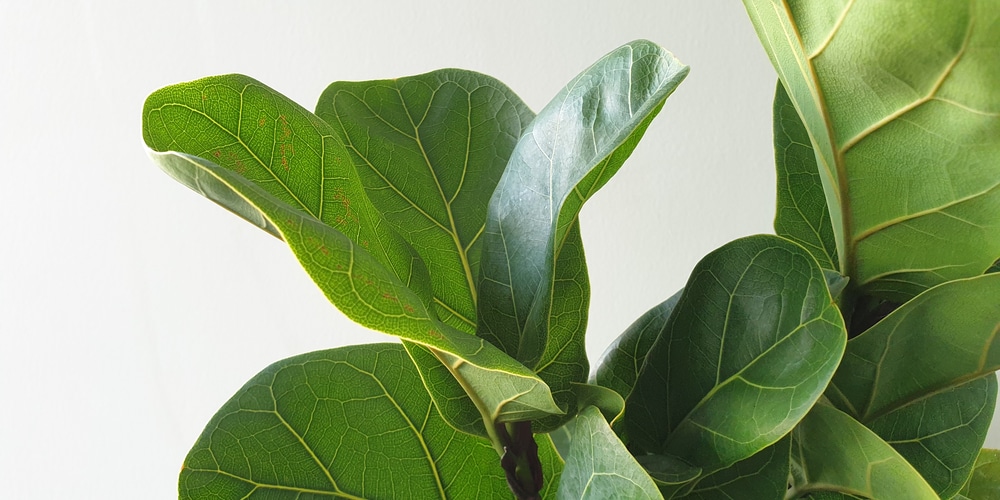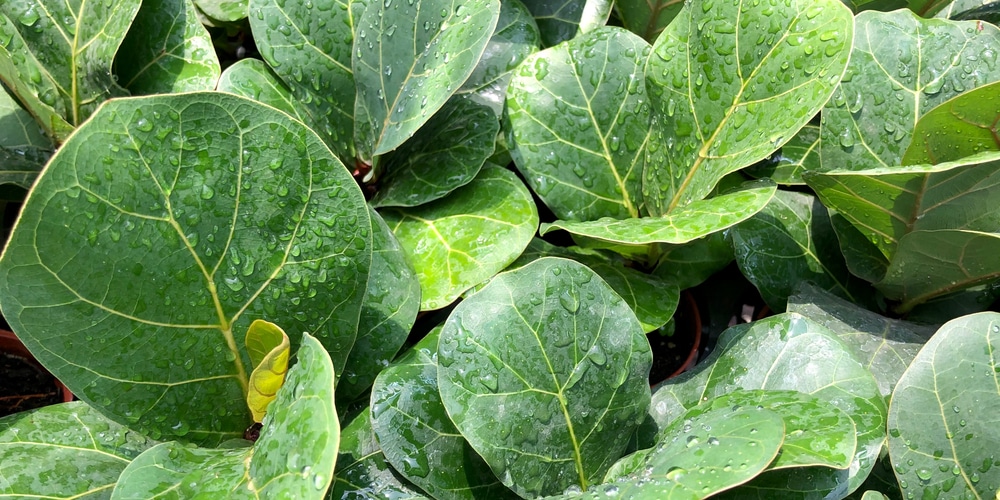You might be worried to see your fiddle leaf Fig shedding a couple of leaves in the past few weeks. Well, dropping a leaf here and there is normal and even healthy for your tree. All plants shed leaves over time and grow new once to replace the old. In most cases, they do this as a strategy to survive cold and dry weather.
But when does dropping leaves become a cause for alarm? Below are some common reasons why Fiddle Leaf Fig leaves, when you should be worried, potential causes the problem, and how you can fix it.
What Does Normal Leaf Drop for a Fiddle Leaf Fig Look Like?
If your fiddle fig leaf occasionally drops the lower leaves that have turned yellow or dried, you can rest easy. Your fiddle is healthy and carrying out a natural process!
Leaves drop from the bottom: The bottom leaves are usually the oldest because growth usually occurs at the top. So the leaves at the bottom will droop and fall off eventually because your fiddle doesn’t need them anymore.
No brown spots: Brown spots are arguably the first sign of health problems in fiddles. Therefore, if the lower dropping leaves are unblemished – no brown spots and not too crispy- it’s just a normal leaf drop and not a sign of a bigger issue.
Dropped leaves are yellowish: While brown spots signify a health issue, yellowing on the fallen leaves isn’t. However, too much yellowing on the tree can mean that your fiddle gets too much water and little fertilizer or light. The leaves that should be yellow are those at the bottom and eventually drop.
When Fiddle Leaf Fig Dropping Leaves Is Alarming?
While it’s easy to tell what’s normal, several signs can indicate there’s something wrong with your Fiddle Leaf Figs. Lucking, most of the underlying issues are easy to fix; you only need to take your time to care for the plant, and it’ll be back in optimal health before you know it.
Here are common reasons why your Fiddle Leaf Fig is Dropping Leaves, symptoms, and how to fix the problem.
Sudden Change In Environment
Fiddle leaf figs have study leaves that make us believe they can adapt to any environment. However, this tree doesn’t like to be moved too much, and a sudden change of environment can cause stress that results in a sudden dropping of the old leaves on the lower side. Some conditions that can cause shock to your fiddle includes:
- A change in humidity levels and lighting
- Moving your fiddle leaf fig to a new pot
- If you’ve recently moved, the physical knocks during transits may also cause shock.
- If a change in environment is what’s causing your fiddle to drop leaves, you shouldn’t worry. As long as the new environment is favorable, the tree will adjust nicely and regain strength and growth.
Insufficient Watering
Your fiddle shouldn’t be swimming in water, but again, letting the soil dry out completely can be a problem. To ensure your tree is getting enough water, keep a consistent watering schedule and check to see the soil is consistently moist at least 3-4 inches from the surface.
Besides water, dry air can cause your fiddle to drop leaves. Therefore, keep it far from a window or door that’s drafty, HVAC, radiator, and any other equipment that makes the air dry.
Fiddle is native to humid, warm, tropical places where they get even temperatures and consistent moisture– your plant will be healthy when kept in similar conditions.
Root Rot
Overwatering or poor drainage can cause root rot, which is mainly evident on the leaves. They develop brown spots due to fungal infection but remain dark green.
However, you can only be sure that the roots of your fiddle leaf fig are rotten by removing it from the pot for inspection. Rotten roots are brown and mushy.
To revive the plant:
Let it dry out for a couple of weeks until the roots have had enough time to recover.
Remove the affected leaves, cut away the brown, mushy roots that don’t seem to get better, and re-pot the tree.
Place your fiddle in an area it’ll receive adequate sunlight, ensure the pot is draining the excess water, and take care not to overwater in the future.
Bacterial leaf spot
The telltale sign of bacterial infection is your fiddle leaf fig’s leaves turning yellow and having brown spots. Both bacterial leaf spot and root rot will cause your leaves to fall off eventually, but what tells bacterial infection apart is that it feeds on newer leaves more than the old ones.
Typically, this is the most challenging problem to fix in fiddle leaf fig. You can care for your plant but still be too late. However, if the damage isn’t severe, cut the leaves with brown spots and transfer the plant to a new pot with fresh, sterile soil. Place your fiddle in an area it’ll receive adequate sunlight and go easy on watering until it recovers.
Insect Damage
Insect infection can be the reason why your fiddle leaf fig is dropping leaves. You can use a magnifying glass to check out for webs or insects on the plant. Also, insects make small spots on the leaves that eventually become holes.
This problem is easy to fix by spraying the plant with products designed to kill houseplants. Alternatively, you can make your home solution by adding an equal amount of baking soda and mineral oil (1-2 tablespoons) in a 500ml bottle of water. Shake the mixture and spray the affected plants; turn the leaves to spray undersides as well. Separate the affected plant from other houseplants, and if possible, take it outdoors. Give the plant at least two weeks, inspect it, and pray it again if need be.
Fiddle Leaf Fig Dropping Leaves: Bottom Line
It can be alarming to realize sudden dramatic leaf drooping on your plant. However, it’s not uncommon for fiddle leaf figs to drop their leave. When it happens, just ensure you’re aware of what is causing this and treat it appropriately!


